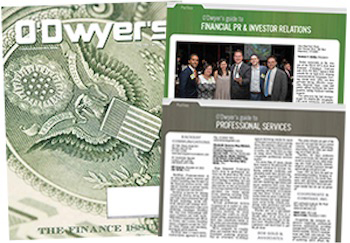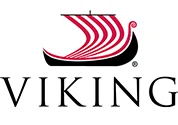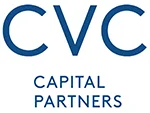|
|
When Peppercomm’s senior PR executives initially met with financial services clients not too long ago they often would run into the same situation: Clients’ marketing departments were siloed. Social media was separate from SEO or media relations was detached from digital marketing or — most worrying — IR from PR. It didn’t exactly play into the integrated communications model that Peppercomm encouraged.
|
|
Rob Berick, Senior VP and Managing Director at Falls Communications, whose clients include several publicly traded companies, came across similar challenges.
“IR folks in-house often don’t have at their fingertips multiple examples of their company’s growth initiatives in action, which are the success stories,” he said. “As a result, it can be a bit of a scramble for these companies to put their results in proper context for investors.”
But in the last year or so, financial services brands and organizations have started to change their tune when it comes to PR and marketing communications.
“I’m definitely seeing the market evolving very quickly,” said Jackie Kolek, Partner and Managing Director of Peppercomm, whose clients include Capital One, EY and Travelers.
|
|
“In many instances, companies are starting to break down silos and look across a paid, earned and owned marketing strategy.”
Peppercomm now offers workshops, boot camps and other programs designed to educate financial services clients and IR executives how to optimize their message across multiple platforms, and stay within regulatory bounds. Clients have also started to ramp up investments for pilot campaigns, which don’t eat up a lot of budget.
The trend is translating into additional business. Peppercomm generated $6.1 million in finance-related net fees in 2016, with an expected 15 increase this year.
“C-level executives want to know how to create a more integrated infrastructure internally, so we can drive more integrated brand messaging externally,” Kolek said. “They’re looking for guidance, and trying to understand the best communications practices in a regulated environment.”
More storytelling
|
|
Whether it’s Federal regulations such as Regulatory Fair Disclosure or Sarbanes-Oxley — not to mention a slew of institutional rules that financial service companies must adhere to — IR executives have to contend with more guardrails than brands operating in less regulated markets.
In addition, digital technologies continue to have a dramatic effect on how investors gather and evaluate financial-related information, which, in turn, has led companies to sharpen their focus on compliance.
Despite the restrictions, IR/PR executives understand they must engage stakeholders or risk having their brand messages get lost in the shuffle or conceding marketshare.
PR agencies can demonstrate increasing value to financial services clients by helping them to connect the dots for constituents.
“There’s more storytelling and education that needs to be done for investors about the distinctive or disruptive qualities a company has that will fuel growth,” Berick said. “Investors need the context behind the results [and] companies often need someone on the agency side to integrate and curate those works streams.”
|
|
“There’s been an acceleration of interest in our services from financial services companies due to the increasingly competitive market for investment vehicles of all kinds,”said Richard Dukas, Chairman and CEO of Dukas Linden Public Relations. “And that’s true both on the institutional and retail sides of the ledger.”
DLPR generated more than $5.1 million in finance-related net fees in 2016, and is on track for at least a 10 percent hike in such fees this year.
Follow the investor
Financial services companies are also bringing in PR firms to expand their reach into the burgeoning environmental, social and governance market, which caters to socially conscious investors.
With investors taking a sharper look at companies’ environmental and labor practices, for example, PR agencies are making sure nothing gets lost in the translation and investors are fully informed.
|
|
“We’re looking for gaps within — and inconsistencies about — a company’s energy and labor policies and how that is being communicated in its CSR reports and financial disclosures,” said Ron Loch, Principal and Managing Director of Sustainability Consulting at G&S Business Communications. “Investors are taking in all sorts of information about a company and if the overall message is not consistent from one marketing channel to another it connotes investor risk.”
G&S, which reported 2016 net fees of $1.6 million from financial accounts, is helping clients to create “scorecards” to stay on top of all the disparate issues encompassing sustainability, such as carbon emissions or alternative energies.
“Companies are just waking up to the fact that institutional investors in the U.S. care about these [environmental and social issues] and understand they need to break down the silos,” Loch said. “The feeling previously was that IR has investors’ needs taken care of, but now there’s more impetus to involve IR with PR and marketing.”
***
Matthew Schwartz is Editorial Director at Gould+Partners.

 Matthew Schwartz
Matthew Schwartz Rob Berick
Rob Berick Jackie Kolek
Jackie Kolek
 Richard Dukas
Richard Dukas Ron Loch
Ron Loch
 Edelman handles Viking Holdings, the river and ocean luxury cruise line that plans to raise $1B via an IPO priced in the $21 to $25 per share range.
Edelman handles Viking Holdings, the river and ocean luxury cruise line that plans to raise $1B via an IPO priced in the $21 to $25 per share range. Teneo is handling the initial public offering of CVC Capital Partners, one of Europe’s largest private equity firms with nearly $200B in assets under management.
Teneo is handling the initial public offering of CVC Capital Partners, one of Europe’s largest private equity firms with nearly $200B in assets under management. Brunswick Group represents Endeavor Group Holdings as it agrees to go private via its acquisition by Silver Lake technology investment firm, which is handled by Edelman Smithfield.
Brunswick Group represents Endeavor Group Holdings as it agrees to go private via its acquisition by Silver Lake technology investment firm, which is handled by Edelman Smithfield. Tod Donhauser, a nine-year veteran of Edelman, has joined H/Advisors Abernathy as managing director and head of its San Francisco office.
Tod Donhauser, a nine-year veteran of Edelman, has joined H/Advisors Abernathy as managing director and head of its San Francisco office. Intelligent Group Ltd, a Hong Kong-based financial PR firm, has priced its initial public offering of 1.9M shares at $4, which is the low end of the $4 to $5 range.
Intelligent Group Ltd, a Hong Kong-based financial PR firm, has priced its initial public offering of 1.9M shares at $4, which is the low end of the $4 to $5 range.


 Have a comment? Send it to
Have a comment? Send it to 
No comments have been submitted for this story yet.